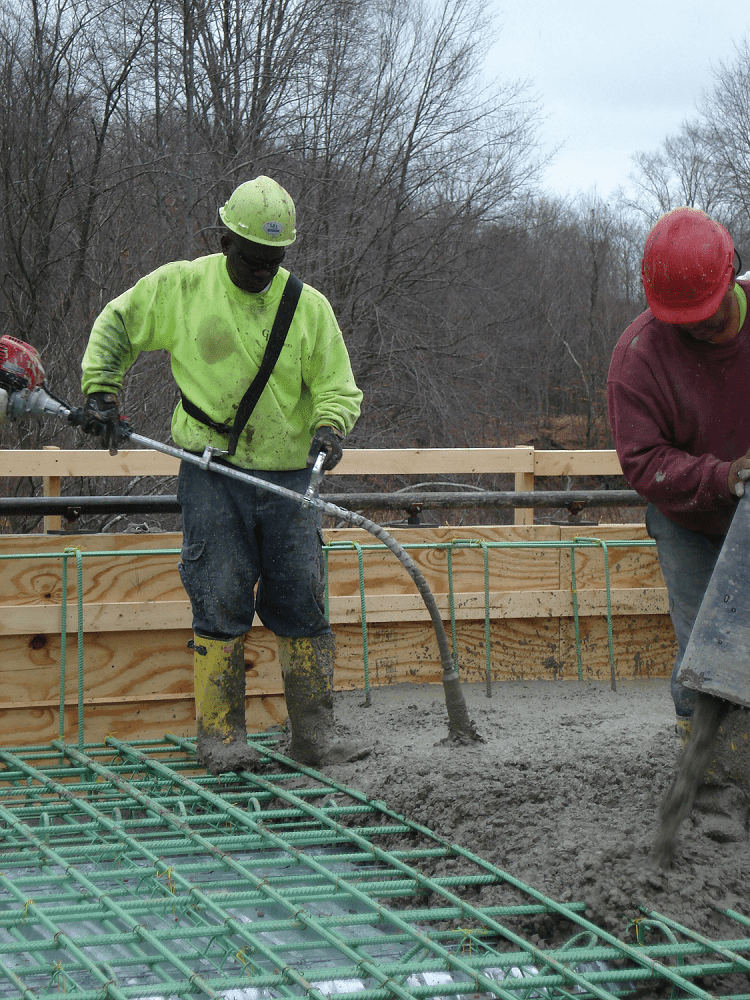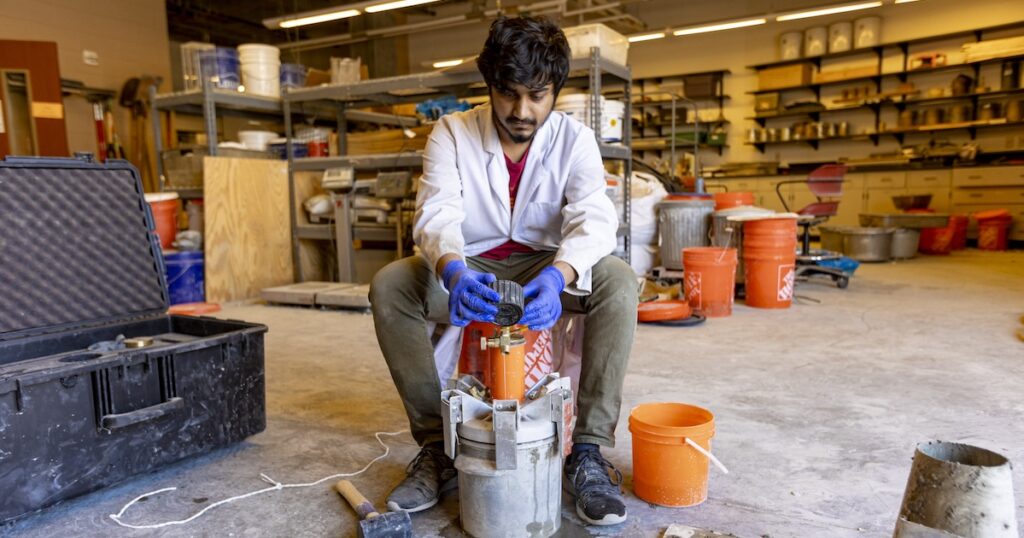7 Proven Strategies to Maximize Project Value with West Coast General Engineering Concrete
7 Proven Strategies to Maximize Project Value with West Coast General Engineering Concrete
Blog Article
The Crucial Duty of Concrete Foundation in Structural Honesty and Longevity
When it pertains to developing a home, the structure is extra important than you might believe. Concrete foundations offer unequaled toughness and toughness, ensuring your framework can withstand various environmental difficulties. Without a strong base, you take the chance of prospective concerns like shifting or breaking, which can jeopardize safety and security and value. Understanding the subtleties of concrete foundations could be the trick to maintaining your financial investment for years to come. What should you take into consideration following?
Comprehending the Importance of Concrete Foundations
Concrete foundations are important to the general stability of any framework, as they give the important support required to hold up against numerous tons and environmental conditions. When you consider developing a home or an industrial area, the structure is the first point you ought to consider. It serves as an obstacle versus dampness, safeguarding your property from water damage. A well-placed concrete structure likewise stops settling and moving, which can bring about fractures in walls and floors. You'll desire to ensure that the structure is effectively developed and reinforced, as this impacts the long life of your structure. Additionally, a strong structure can boost power performance by reducing air leaks. Keep in mind, ignoring the value of a concrete foundation can cause pricey repair work down the line. So, purchasing a high quality structure upfront is important for the honesty and durability of your structure.
Benefits of Concrete Structures for Architectural Honesty
While lots of elements add to a building's structural honesty, concrete structures provide unparalleled sturdiness and toughness. You'll value that concrete can stand up to severe climate condition, resisting both moisture and temperature level fluctuations. This resilience means your structure is much less most likely to experience breaking or moving in time, which can jeopardize its safety.Additionally, concrete's integral weight offers a solid base, avoiding motion during all-natural events like earthquakes or floods. When you pick a concrete structure, you're also choosing reduced upkeep; unlike timber, it will not rot or attract parasites, saving you money and time in repairs.Moreover, concrete's fire resistance offers added safety and security, guaranteeing your framework can sustain heats without significant damage. Overall, buying a concrete foundation means you're focusing on the long-lasting stability and integrity of your structure, making it a wise choice for any kind of building and construction task.
Typical Types of Concrete Foundations
When it concerns building foundations, recognizing the common sorts of concrete foundations can help you make educated selections for your task. One of the most prevalent kinds include slab-on-grade, crawl area, and full basement foundations.A slab-on-grade structure is a simple, cost-effective alternative, where a thick concrete slab is poured directly on the ground. This kind works well in cozy environments, as it lessens warmth loss.Crawl space foundations raise the home slightly above ground, allowing for air flow and accessibility to plumbing and electric systems. This style can assist protect against moisture issues.Full cellar foundations use added living or storage room while supplying outstanding architectural assistance. They need even more excavation and are generally utilized in colder environments to avoid frost heave.
Variables to Take Into Consideration When Designing a Concrete Foundation

Best Practices for Putting Up Concrete Foundations
When you're setting up a concrete structure, appropriate website preparation is vital to guarantee stability (WCGE commercial concrete). You'll also need to recognize reinforcement strategies to enhance stamina and resilience. Do not ignore the healing process, as it plays a basic role in accomplishing a solid structure.
Site Preparation Significance
Although it might seem uncomplicated, proper site preparation is essential for guaranteeing a solid and durable concrete structure. Begin by getting rid of the area of any type of debris, plants, or natural product that could jeopardize the foundation's honesty. Next off, examine the soil type and compaction; you may need to excavate or include products to create a secure base. Degree the ground to ensure even weight circulation and avoid resolving issues later on. Mounting proper water drainage systems is also necessary to protect against water accumulation, which can damage the structure over time. Mark out the structure's dimensions properly to lead the putting process. By complying with these steps, you'll establish the stage for a successful concrete foundation that stands the examination of time.
Reinforcement Methods Discussed
Once the site is appropriately prepared, the next action in assuring a tough concrete structure involves implementing effective support strategies. You need to start by utilizing steel rebar, which supplies tensile stamina and aids avoid breaking. Lay the rebar in a grid pattern, making certain it's elevated using spacers to maintain correct insurance coverage. Additionally, think about utilizing cable mesh for added support, particularly in locations subject to heavy lots. Don't fail to remember to tie the rebar junctions securely with cord. For bigger foundations, fiber support can enhance toughness, decreasing the danger of shrinking fractures. Always follow regional building regulations and standards to ensure compliance. By using these support methods, you'll substantially improve your foundation's strength and long life, laying a strong groundwork for your framework.
Curing Refine Basics
To ensure your concrete structure cures correctly, Get the facts it is essential to preserve ample dampness and temperature level problems quickly after pouring. Start by covering the surface with a damp cloth or plastic sheeting to maintain dampness. This maintains the concrete hydrated, stopping fractures and guaranteeing stamina. You should likewise monitor the temperature; perfect healing conditions are in between 50 ° F and 90 ° F. If it's too warm, mist the surface area frequently to avoid fast evaporation. For cold weather condition, think about utilizing protecting coverings to preserve heat. Goal for a healing duration of at the very least seven days, as this is essential for optimum stamina advancement. By following these finest practices, you'll improve your foundation's durability and longevity, ensuring architectural honesty for many years to come.
Maintenance of Concrete Foundations for Longevity
To maintain your concrete structure strong and long lasting, normal evaluations are essential. You should additionally ensure efficient water drainage remedies are in place to stop water damage. If you find any type of fractures, resolving them quickly will conserve you from bigger troubles down the line.

Routine Evaluations and Assessments
While regular inspections and evaluations could appear like a chore, they're necessary for keeping the stability of your concrete foundation. By regularly inspecting for cracks, changes, or indicators of wear, you can catch potential issues prior to they intensify right into pricey repair services. Try to find any type of water merging around the structure or unusual settling, as these can signal underlying issues. It's also sensible to check any changes in your home's structure, like doors that stick or windows that don't open efficiently. Maintaining a record of your examinations helps track changes in time, permitting aggressive maintenance. Eventually, these assessments ensure your structure remains stable, supporting the longevity and safety and security of your whole structure. Don't neglect this vital element of homeownership!
Effective Water Drainage Solutions
Routine inspections can reveal problems like drain issues that may jeopardize your concrete structure's stability. To avoid water accumulation, assure your seamless gutters and downspouts straight water away from the structure. Installing French drains pipes can properly reroute surface and groundwater, lowering pressure on your foundation wall surfaces. In addition, grading the soil around your home aids assure that water flows away, rather than merging near your foundation.Consider making use of sump pumps in areas prone to flooding, as they actively eliminate excess water. Routinely look for clogs in drain systems and clear them without delay. You'll protect your foundation's integrity and durability by taking these positive actions. Remember, effective drainage services are necessary for maintaining a strong, durable concrete foundation.
Prompt Crack Repair Works
When you discover fractures in your concrete foundation, addressing them immediately is necessary for keeping its long life. Tiny splits can promptly advance right like this into bigger problems, jeopardizing the structural stability of your home. On a regular basis examine your foundation for indications of damage, such as horizontal or upright splits. If you identify any type of, don't wait-- repair them instantly. You can use epoxy injections or concrete patching substances, which are reliable for securing splits. Always follow the maker's instructions and take into consideration consulting an expert for considerable damage. Bear in mind, prompt repair work not only boost your foundation's sturdiness but additionally conserve you money in the future by preventing more considerable repair services down the line. Stay aggressive, and your foundation will continue to be strong and safe and secure.
Attending To Common Concerns With Concrete Structures
Concrete structures can face numerous issues with time, making it important to identify and resolve them quickly. Among the most usual problems is breaking, which can take place because of temperature level changes or settling soil. If you see fractures, it's important to examine their dimension and depth; tiny cracks can commonly be sealed, while larger ones might require expert evaluation.Water breach is another significant concern. Excess wetness can bring about mold development and architectural degeneration. Warranty proper drain around your structure to mitigate this threat. Additionally, try to find indicators of shifting or bowing walls, as this can suggest underlying problems with your structure's stability.Regular inspections are essential to capture these troubles early. If you detect any concerning indications, do not wait to consult a foundation professional. By remaining aggressive, you can keep the integrity and longevity of your concrete foundation, ensuring your home stays risk-free and safe.
Regularly Asked Inquiries
Just How Does Dirt Kind Influence Concrete Foundation Efficiency?
Dirt kind greatly influences go concrete foundation performance. If you have actually got large clay, for circumstances, it can cause moving and splitting. Sandy dirt may cause resolving. Recognizing your dirt aids assure a secure structure.
Can Concrete Foundations Be Fixed if Damaged?
Yes, you can repair damaged concrete structures. Relying on the level of the damages, methods like epoxy shot or slab jacking can bring back stability. It's best to speak with a professional for effective remedies.
What Is the Regular Life Expectancy of a Concrete Foundation?
A concrete foundation typically lasts 30 to 100 years, relying on elements like soil conditions, environment, and maintenance. You'll intend to keep an eye on it to guarantee it remains in excellent form throughout its lifespan.
Are There Alternative Products to Concrete for Foundations?
Yes, there are choices to concrete for structures, like steel, hardwood, or perhaps recycled products. Each alternative has special advantages and drawbacks, so you need to consider your job's particular needs when choosing the appropriate material.
Exactly How Does Climate Impact Concrete Structure Toughness?
Climate greatly impacts concrete structure longevity (West Coast General Engineering Concrete). Severe temperatures, moisture, and freeze-thaw cycles can damage the product, causing splits and structural problems. You must think about local environment problems when planning your structure to ensure long-term efficiency
Report this page